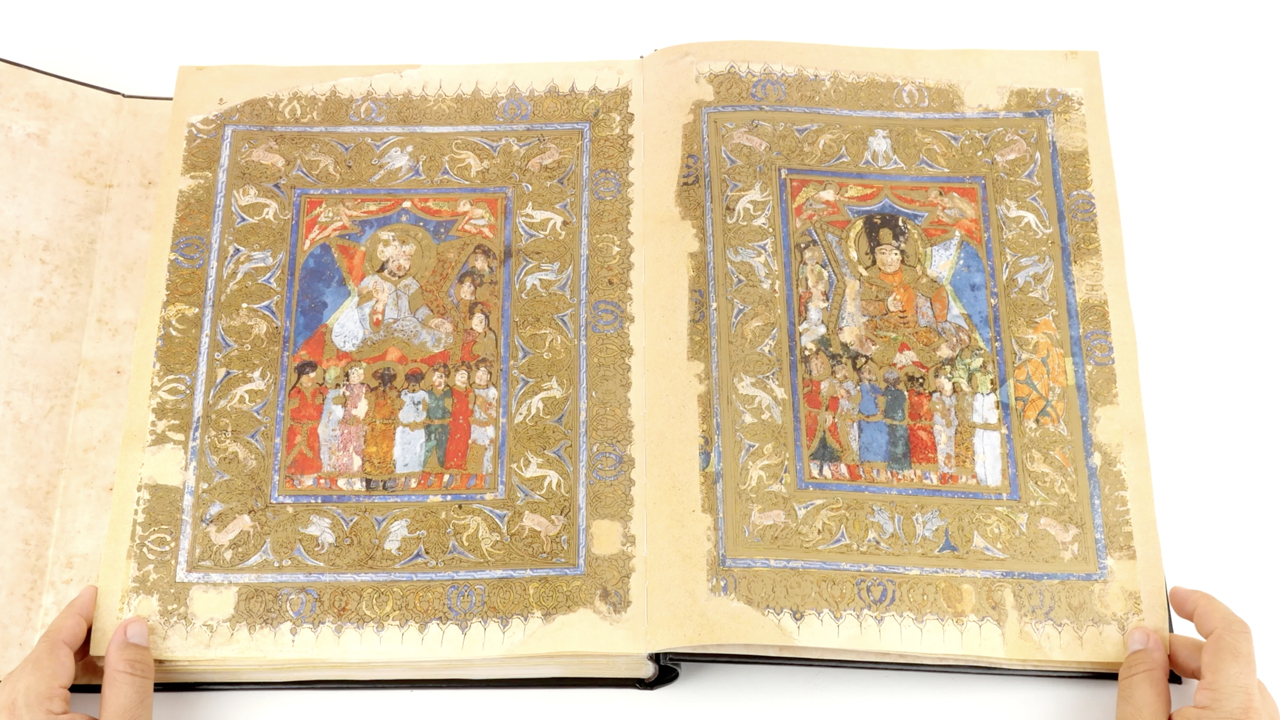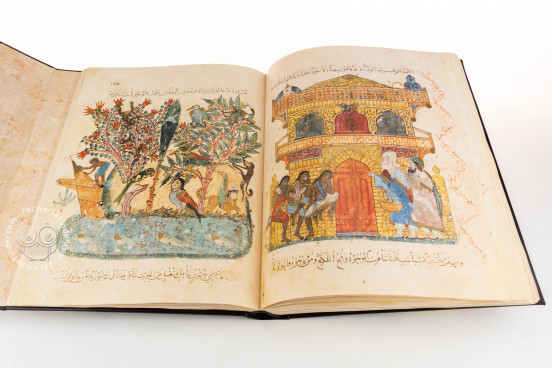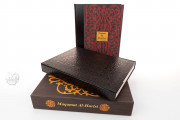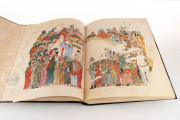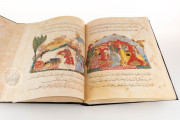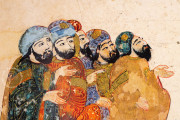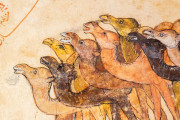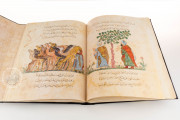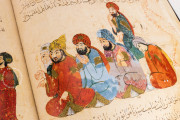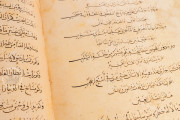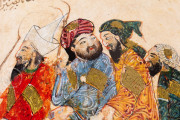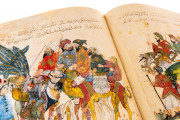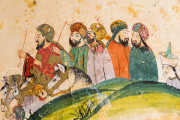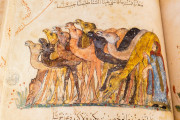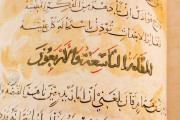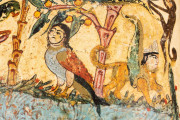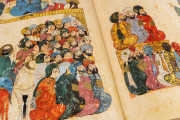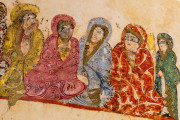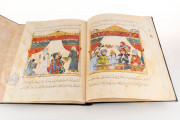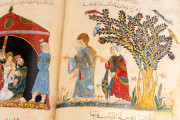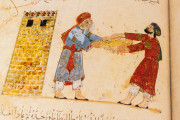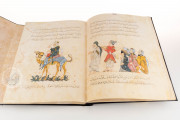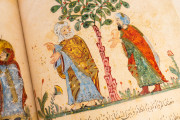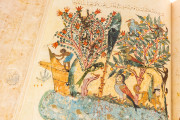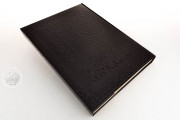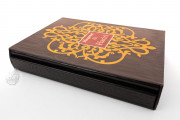The Schefer Maqamat, also known as Scherer Hariri or Al Maqamat al Hariri, is one of the most overwhelmingly beautiful Arabic illuminated manuscripts. Magnificently illustrated by Yahya ibn Mahmud al-Wasiti, it recounts fifty short stories written by Abu Muhammad al Qasim ibn Ali al-Hariri (1054-1122). Produced in Southern Iraq in the first half of the thirteenth century, the manuscript features ninety-nine surviving miniatures highly esteemed, in modern times, for their authentic depiction of real life.
Maqāmah are an Arabic literary genre containing a combination of prose and verse, formally known as prosimetrum; the rhymed prose is known as Saj' and it alternates with extravagant poetry. The plot follows the hijinks of a rogue character, Abu Zayd, recounted by al-Harith, a naive merchant travelling from one place to another.
A Pinnacle of Islamic Painting
Produced under the late Abbasid caliphate, the Schefer Maqamat manuscript is an example of both literary and iconographic artistic sophistication. While the text shows the finesse and mastery of verbal confrontation, scholarly explanations, and quick-wittedness typical of the Maqamat – genre perfected by al Hariri – the iconography is a magnificent specimen of Islamic painting.
Most of the miniatures have raised gold decoration, with black and red calligraphic script. Despite the thematic similarity between some scenes, the artist always manages to avoid monotony by means of a not too brash color variety and subtle shifts in emphasis.
An example of the artist's skilled hand is the illustration of the departure of the caravan to Mecca (fol. 94v.), where, almost in a state of religious frenzy, the crowd is on its way to the holy city, prompted by the sound of the trumpets. The naturalistic elements are permeated by a decorative ornamental beauty. Both subtle and powerfully expressive, the Schefer Maqamat represents a pinnacle of Islamic painting, to which even Buddhist Indian art made a contribution.
Unparalleled Sophistication
The rhetorical style achieved by al Hariri was used as textbook for rhetoric and as schoolbook until early modern times. Likewise, the pictorial achievement of al-Wasiti is still unparalleled, and as a testament to his skilled painting, still today, nearly every book regarding any aspect of Islamic culture makes use of his illustrations.
Both the variety and the consistency of the illustrations allow one to understand, at first glance, the text just by looking at the depictions, for they are true-to-life representations of the activities of an ordinary Arab bourgeoisie community (drinking in a tavern, sleeping, buying a slave etc.).
Realism of Intent
Even though the characters may be slightly exaggerated in terms of clothing, poses, and gestures, it can be assumed that they reflect what the artist saw as he walked around making sketches of the people he saw. His interest for people is balanced by a much smaller attention for the vegetation, primarily stereotyped. Al-Wasiti's art can be interpreted as realism of intent, in that he wanted to represent a specific recognizable world, without depicting every detail or feature.
We have 1 facsimile edition of the manuscript "Schefer Maqamat": Maqamat Al-Hariri facsimile edition, published by TouchArt, 2003
Request Info / Price
